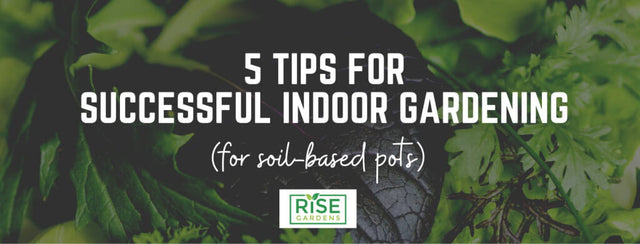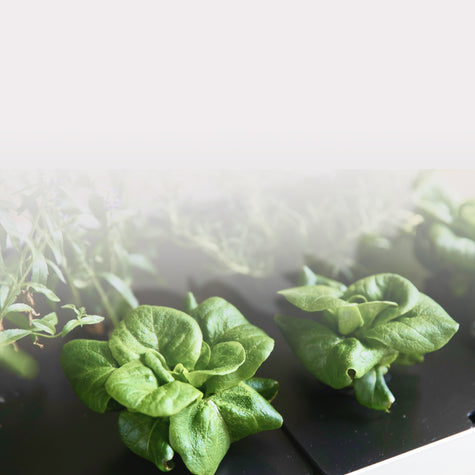After much testing and research, we built our smart gardens with hydroponic technology, which we find to yield the best results. However, we know that many of you have house plants or grow herbs and food in pots in your home using soil, especially during these unchartered times.
In fact, if you are interested in growing your own vegetables and herbs because of what’s happening in the world right now, you are not alone. Gardening, victory gardens, and indoor gardening are all the rage and we are here to help you grow!
Our plant scientist, Angelo Kelvakis, has cultivated his top five tips for successful indoor gardening.

-
Watering Your Plants the Right Amount is Essential.Watering your plants can make or break the life cycle of your plants when you are indoor gardening. Follow the following schedule and use these tips to yield the best outcomes.
House Plants:1-2 times a week
Succulents: Every other week
Edible Plants (Food and Herbs): Generally, you will want to water it twice a week but pay close attention to soil moisture. A common mistake is only paying attention to the top of the soil which can remain looking moist. If your pot is large enough, poke your finger into the soil as far as you can. If the soil feels, dry add water. If it’s wet all the way down, you're good and do not need to water it yet. For most edible potted plants, they may need to be watered 2-3 times a week as they are faster growing plants, but always check the soil first. -
Sunshine and Light Levels Vary for Plants. Most plant labels will have information on lighting (direct light, full light, partial light, shade, etc.) and you should keep the labels so you remember. However, if you don’t have a label, you can easily search on the internet with the plant’s name to find out too.
If you live in the Northern Hemisphere, any south-facing windows will get the most direct sunlight. From there, success is finding other windows to get your partial light needs. For edible plants, try and give them as much sunlight as possible and you may need to use supplemental lighting depending on where you live and your access to direct light. You can find pretty cheap grow lights on Amazon. You should look for PAR values above 120 for herbs and greens. For larger indoor plants like peppers and tomatoes, you should get closer to 400 PAR. -
Temperature is Important and the Weather Outside Affects Conditions in Your Home.Take the varied climates inside your house into consideration. There will be higher/lower temperature zones around your radiator, air vents, and near your oven. Putting your plants directly in front of them or near them can cause stress. If you put plants right by the door, they may get colder or hotter (depending on the season) if your door is not fully sealed or is used often.
As the seasons change, your house environment will too. For example, during the winter, your humidity will drop and you may need to increase your watering on some of your plants. - Potted Plants Need Fertilizer.Most soil mixtures from plant stores are pretty cheap so fertilizing is essential for success. With food and herbs in pots, they need food and energy to survive since they can’t receive that from the various levels of soil and nutrients in the ground. Most house plants should get fertilized once every other month, depending on the size of the plant. To add fertilizer, buy a liquid form and mix the recommended amount into the water you add to your plant.
- Transplanting Your Plant is an Important Step in Growth. You should keep in mind that plants have a one to one ratio of above-ground material to below-group material. This means that as your plants grow, they need to be moved into a larger pot. Some people call this transplanting or “potting up” your plants. Keep an eye on your plants and don’t wait too long before you transplant your plants to stop any growth stunting from occurring.
Of course, if you want to skip most of these steps and have our smart gardens and app do most of the work, learn more about them at risegardens.com
For more interesting tips and trick, check out our blog



